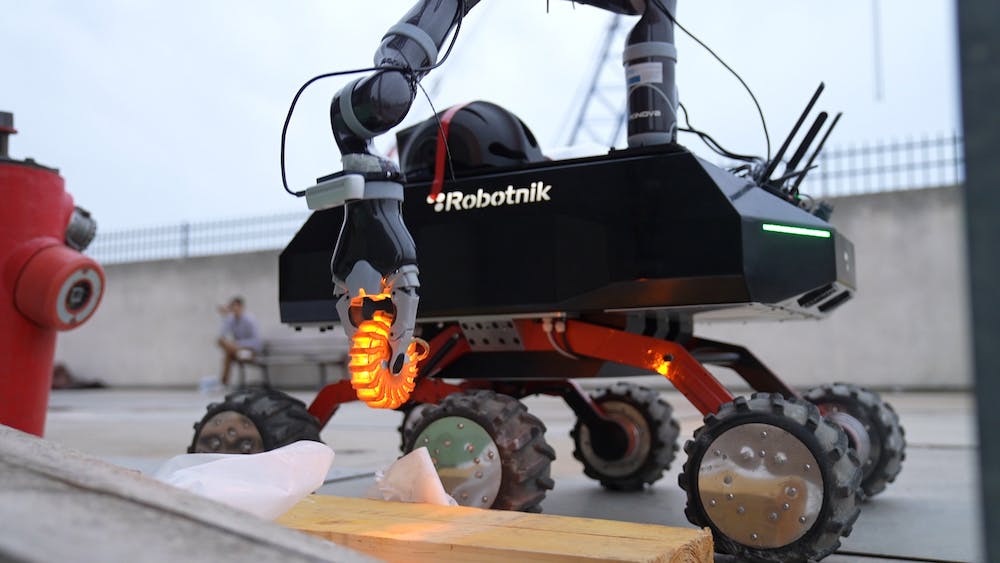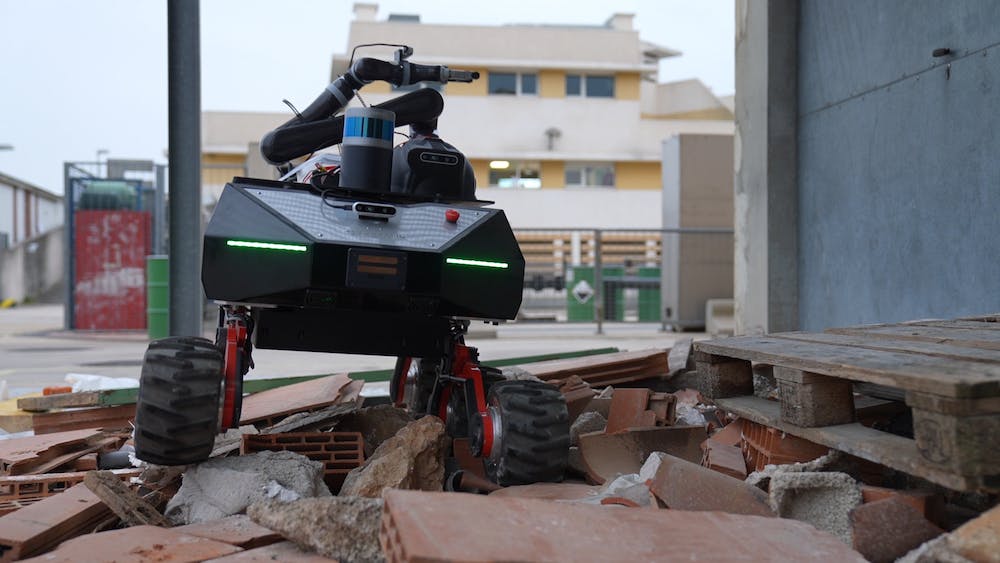
January 09, 2023
UGV - super equipped robot.
The UGV, Unmanned Ground Vehicle are the autonomous and fully equipped robots developed by INTREPID project.
What is an UGV?
The UGV, Unmanned Ground Vehicle, is an autonomous and intelligent robot developed within the INTREPID project. A robot with a weight of 40 kilograms plus 10 kilograms of cargo.
It’s developed by our partner Robotnik. UGV is a completely new development, for the company, it is a concept that they had not deployed until now. It’s a complicated improvement process, both in terms of design and technology.
For the first simulation in real life, in November 2021, the developed software was demonstrated. The same software that is running on the INTREPID’s UGV can also work on an existing robot with six wheels, or the walker UGV that is under construction.
The robot will be equipped with an arm. The actual one, is a commercial arm, from a brand called Kinova. The arm needs to be integrated with the platform. It includes the functionality to pick up from the ground, unknown objects that the robot had not seen before. It’s working with an integrated camera, which scans the object to take, then it looked for the best way to pick it up. It recognized the shape, over the type of object, and then the software will analyse the object to see what the best way is to grab it. The arm has a load capacity are 1,3 kilos.

The robot arm picking up an object.
The possible movements
In navigation mode, the robot should move at 3 meters per second, which is 10 kilometres per hour.
The whole system should move autonomously around, about 2 hours continuously, and 10h if it’s stopped, i.e. without the need for human intervention. But a teleoperation will also be possible, if the automatic navigation system fails or if the operator prefers to teleoperate.
The six wheels allow the robot to overcome obstacles such as rubble.

The robot going through the rubbles.
The robot equipments
The idea is that the payload is interchangeable, so that it is easy, for example, to interchange between the arm and the drone fence, for example. The same principle is used with the rest of the sensors.
The following sensors will be added to the robot: navigation sensors, environment identification (3D LIDAR, 3D cameras), gas sensors to measure the concentration of different gases such as CO2 or carbon monoxide. The communications system developed within the project will also be installed. And also RTPM, the localization module being developed by our partner FOI.
Next steps
The real challenge is to develop a walking robot, because Robotnik is specialized in robots with wheels.
It will have a standing navigation mode: the legs will be standing, so the speed will be reduced, it’ll be about 1 meter per second maximum, which is about 3 kilometres per hour. But it will have the ability to move over obstacles like for example stairs, climbing curbs, climbing stones etc.
For the third Pilot the first version of the walking robot, the quadruped, should be ready.
📸 Jens Lind
Want access to exclusive INTREPID content? 💌 Subscribe to our newsletter! 💌




